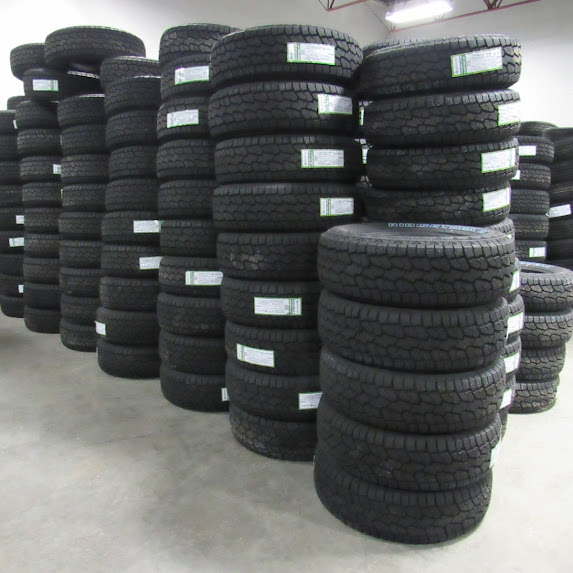Finding the right used winter tires can make a huge difference in your driving experience. Quality winter tires boost safety and performance on icy roads. They provide better traction, handling, and stability when you need it most.
Choosing used winter tires is not just smart; it’s budget-friendly too. You can save money while still ensuring your vehicle is equipped for harsh weather conditions. However, knowing what to look for is key. Inspecting tread depth and checking for damage are essential steps. In this post, we’ll dive into tips for selecting the best used winter tires that fit your needs and keep you safe on the road this season.
Key Takeaways
-
Used winter tires can save you money while still providing good traction and safety in snowy conditions. Consider purchasing them if you are on a budget.
-
Before buying used winter tires, check their tread depth and age to ensure they are still effective. Look for tires with at least 6/32 inches of tread remaining.
-
Make sure to research the brand and model of the used tires to confirm they are suitable for your vehicle and driving conditions.
-
Proper installation is key. Have your used winter tires installed by a professional to guarantee they are mounted correctly and balanced.
-
Regularly inspect your winter tires for wear and damage throughout the season. This will help maintain safety and performance.
-
Shop around for the best deals on used winter tires. Local tire shops, online marketplaces, and community sales can offer great options.
Understanding Winter Tires

What Are Winter Tires
Winter tires are specialized tires made for cold weather and snowy conditions. They have unique tread designs and rubber compositions that enhance grip on icy surfaces. The tread patterns are deeper and more aggressive than regular tires. This design helps channel snow and slush away from the tire. In regions with harsh winter climates, using winter tires is essential. They provide better control and reduce the risk of accidents in severe weather.
Key Features of Winter Tires
Winter tires feature unique tread patterns. These patterns help provide better traction in snow and slush. The tires use softer rubber compounds. This composition allows them to remain flexible even in low temperatures. Winter tires have extra sipes. These small cuts in the tread create more biting edges for improved grip on icy roads.
Identifying Winter Tires
Look for the snowflake symbol on winter tires. This symbol indicates a tire’s suitability for severe winter conditions. Differentiating winter tires from all-season tires is crucial. Winter tires usually have deeper tread depths and distinct designs. Checking the age of tires is also important. Tires older than six years may not perform well in winter conditions.
Types of Winter Tires
Winter tires fall into two main categories: studded and non-studded types. Studded tires have metal studs embedded in the tread for added traction on ice. They excel in icy conditions but may not be allowed everywhere due to regulations. Non-studded tires provide good performance on snow and wet roads without damaging pavement. Performance winter tires are available too. They offer enhanced handling for drivers who want more control during winter driving.
Benefits of Used Winter Tires

Cost-Effectiveness
Used winter tires offer significant cost savings for drivers. New winter tires can be expensive, often costing several hundred dollars. In contrast, purchasing used tires can save you up to 50% or more. This affordability does not mean sacrificing safety. Many used winter tires still have plenty of tread left and meet safety standards.
Promotions can further enhance savings. Many retailers offer discounts on used tires during the fall season. These deals make it even easier to equip your vehicle for winter without breaking the bank.
Environmental Impact
Using winter tires seasonally reduces your environmental footprint. When drivers use winter tires only in cold months, they minimize wear on all-season tires. This practice extends the lifespan of both sets of tires.
Recycling worn tires also helps reduce waste. Many tire shops have programs to recycle old tires into new products, such as rubber mats or asphalt. Proper tire maintenance improves fuel efficiency too. Well-maintained tires reduce rolling resistance, leading to lower emissions and better gas mileage.
Performance in Cold Weather
Winter tires outperform all-season tires in cold temperatures. They are designed to remain flexible in temperatures below 45 ºF. This flexibility enhances grip on icy roads.
Braking distance is shorter with winter tires compared to all-season options. On snowy surfaces, they provide better cornering stability, which is crucial during winter storms. Drivers experience improved control when using winter tires, making them a safer choice in harsh conditions.
In summary, investing in used winter tires brings multiple benefits. They are cost-effective and environmentally friendly while offering superior performance in cold weather. These advantages make them a smart choice for any driver facing winter conditions.
Considerations Before Buying
Tread Life Assessment
Inspecting the tread life of winter tires is crucial. Look for indicators of tread wear like uneven surfaces or bald spots. These signs suggest that tires may need replacement. Measuring tread depth helps ensure optimal performance. A depth of at least 6/32 inches is recommended for winter driving.
Visual inspections are important as well. Check for cracks, cuts, or bulges on the tire surface. These issues can compromise safety and handling. Regular assessments keep drivers informed about their tire condition.
Rubber Quality Check
Assessing rubber quality before buying used winter tires is essential. Start by checking for visible cracks or bulges. These signs indicate deterioration and reduce tire lifespan. Tires should feel pliable, not hard or brittle.
Tire age plays a significant role in overall safety. Most experts recommend replacing tires older than six years. The date code on the tire sidewall shows the manufacture date. Knowing this information helps buyers make informed choices.
Weather Suitability
Winter tires excel in specific weather conditions. They outperform other types in snow, ice, and cold temperatures below 45°F (7°C). Their design provides better traction and handling in these environments.
However, winter tires have limitations in warm weather. Performance declines as temperatures rise, leading to faster wear. Avoid using them during summer months to maintain their effectiveness.
Selecting the right tire based on local climate is vital. In regions with harsh winters, winter tires are a good idea. For areas with mild winters, all-season tires might suffice.
Compatibility with Rims
Ensuring proper fitment of winter tires on existing rims is critical. Mismatched sizes can lead to handling issues and increased wear. Always verify specifications before purchasing used tires.
Having dedicated rims for winter tires simplifies seasonal changes. This practice saves time and reduces the risk of damage during tire swaps. Different rim materials also affect performance; aluminum rims are lightweight while steel rims offer durability.
Choosing compatible rims enhances overall safety and efficiency on the road. Proper fit ensures that winter tires perform as intended in challenging conditions.
Installation and Usage Tips
Best Time to Install
Installing winter tires at the right time is essential for safety. The ideal period is usually between late October and early November. This timing allows drivers to prepare for winter conditions before the first snowfall.
Early installation provides several benefits. It ensures that you have adequate traction when temperatures drop. Monitoring weather forecasts helps determine the best installation time. Look for signs of frost or snow in your area. Installing tires before bad weather hits can prevent accidents.
Proper Maintenance Practices
Maintaining winter tires extends their lifespan and improves performance. Regular tire rotations are crucial. Rotate your tires every 5,000 to 7,500 miles to ensure even wear.
Proper alignment also plays a role in maintenance. Misalignment can lead to uneven tire wear and affect handling. Keeping an eye on tire pressure is equally important. Under-inflated tires can reduce grip and fuel efficiency. Check tire pressure monthly during winter months.
Storage of winter tires during off-seasons matters too. Store them in a cool, dry place away from sunlight. Use tire bags to prevent dust accumulation. Storing tires upright prevents deformation.
Avoid Year-Round Use
Using winter tires outside their intended season poses risks. Winter tires are designed for cold temperatures and snowy conditions. Using them in summer leads to faster wear and reduced performance.
The softer rubber compounds used in winter tires become too soft in warm weather. This can cause poor handling and increased stopping distances. Design differences make winter tires unsuitable for summer conditions. They have deeper treads for snow traction, which can lead to hydroplaning on wet roads.
Year-round use may also void warranties offered by manufacturers. Understanding these risks helps maintain both safety and performance of your vehicle.
Comparing Tire Options
Winter vs All-Season Tires
Winter tires and all-season tires serve different purposes. Winter tires have a specific design for cold weather. They feature softer rubber and deeper treads. This allows them to maintain grip on snow and ice.
All-season tires are built for varied conditions. They perform well in both dry and wet weather but struggle in extreme cold. Winter tires outperform all-season tires in snowy conditions. Drivers should choose based on their driving habits and local climate. If you live in an area with harsh winters, winter tires are essential.
Role of Tread Design
Tread design plays a critical role in tire performance. It affects traction, handling, and braking in winter conditions. Tires with deeper treads provide better grip on snow. Unique tread patterns help channel slush away from the tire surface.
These features reduce the risk of hydroplaning during wet conditions. Having the right tread design can make a significant difference in safety. For instance, winter tires often have more grooves and sipes than all-season options. This increases contact with the road, improving stability.
Importance of Rubber Compound
Rubber compound is crucial for tire effectiveness in cold weather. Winter tires use special compounds that remain pliable at low temperatures. This flexibility enhances grip on icy surfaces.
Temperature impacts tire performance significantly. In colder weather, all-season tires can harden, reducing traction. The difference in rubber composition between winter and all-season tires is vital for safety. Winter tires are designed to perform optimally when temperatures drop below 45°F (7°C).
Finding the Best Deals

Online Shopping Tips
Researching tire options online is essential. Start by identifying your vehicle’s tire specifications. Look for the size, load index, and speed rating. Each detail matters when selecting used winter tires.
Reading customer reviews offers valuable insights. Customers share their experiences with specific brands and models. This information helps in making informed decisions.
Verifying compatibility is crucial. Ensure that the tires fit your vehicle’s make and model. Check the manufacturer’s recommendations for best results.
Comparing prices across different online retailers can save money. Websites often have special sales or discounts on new winter tires. Use price comparison tools to find the best deals.
Local Stores in Calgary and Edmonton
Nothing But Tires is a reputable tire store with locations in Calgary and Edmonton. Purchasing from local retailers has its benefits. You receive personalized service from knowledgeable staff. They can help you choose the right tires for your needs.
Immediate availability is another advantage. You can drive away with your tires the same day. This convenience is especially important during winter months.
Seasonal promotions attract customers to local stores. Many offer free installation or discounts during peak season. Keep an eye out for these deals to maximize savings.
Closing Thoughts
Used winter tires can be a smart choice for your vehicle. They offer cost savings and reliable performance in harsh conditions. Understanding the benefits and considerations helps you make informed decisions. Proper installation and care ensure safety on icy roads.
Finding the best deals means you can gear up without breaking the bank. So, don’t hesitate—explore your options today. Equip your ride with quality used winter tires and drive confidently this season. Your safety matters, and the right tires make all the difference.
Frequently Asked Questions
What are winter tires?
Winter tires are specially designed for cold weather conditions. They have unique tread patterns and rubber compounds that provide better traction on snow and ice, enhancing safety during winter driving.
Are used winter tires safe to buy?
Yes, used winter tires can be safe if they are in good condition. Check for tread depth, signs of wear, and any damage before purchasing. Proper inspection is crucial for safety.
How do I know if my used winter tires are still effective?
Measure the tread depth; it should be at least 6/32 inches for optimal performance. Also, look for any cracks or uneven wear that could affect their effectiveness.
Can I mix used and new winter tires?
It’s not recommended to mix used and new winter tires. Different tread depths can cause handling issues and reduce overall traction. Stick to a matched set for safety.
Where can I find the best deals on used winter tires?
Check local classifieds, tire shops, and online marketplaces like eBay or Craigslist. Always compare prices and inspect the tires before buying to ensure you’re getting a good deal.
How long do winter tires last?
Winter tires typically last about 4-6 seasons, depending on usage and conditions. Regularly inspect them for wear and replace when necessary to maintain performance.
Do I need to install winter tires professionally?
While you can install winter tires yourself, professional installation ensures proper mounting and balancing. This helps improve vehicle safety and performance during winter months.
Here are some of Nothing But Tires’ Top Resources:
Understanding Tread Rubber compounds
Handle extreme winter conditions
Looking for help navigating the purchase and transition from summer to winter tires cost, to snow or all weather tyres? no problem Nothing But Tires offers a huge selection of rubber to meet your needs and budget! Contact our team and get informed help with the experts. With exceptional experience in providing both new and used tires and from full sets or a single tire to replace damaged unit, we are here to help!
